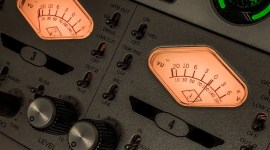
What Is a Leitmotif? How Do They Work In Films?
Music contributes to the development of a film’s story through leitmotifs. But what is a leitmotif, and how does it work?
Leitmotifs have been around since the 19th century. Formally used in operatic works, this tool has been inhabited in the filmmaking world. The functions of leitmotifs are way more powerful than what we see on the surface. The complexity behind this technique is what allows the listeners to become more engaged into the drama and the characters journeys. Here we will discuss the roles of the leitmotif, and how they are used in Hollywood films.
Definition and History
The term leitmotif derives from the German term “Ieading motif.” The primary function is a musical phrase that represents a certain character, place or idea that contributes to the narrative.
The origins behind this musical technique derives from composer Richard Wagner. Renowned for his opera compositions and his meticulous composition strategy behind them, the leitmotif became a staple element. Rather than having the music just simply accompany, the music becomes alive and part of the characters’ entities. It evolves alongside the narrative in addition to reflecting the individuality, power, characteristics, and challenges observed.
One of Wagner’s famous works that heavily uses leitmotifs is “The Ring.” It uses many leitmotifs that are all associated with certain characters, items, places etc. Here’s a great video by the Metropolitan Opera Orchestra showing and describing the various leitmotifs.
The practicality that music played within Wagner’s operas were a catalyst in regards to film music. In a way, movies are very much like operas. Only, the audience are watching the action on-screen, with much more versatility in CGI as well as a wider variety on scenic/character perspectives. The function of music is very similar, if not the same. The music can convey the unseen, underscore moments of dialogue and have a musical interlude in moments of high drama and action.
Leitmotif Master John Williams
Here is an example of leitmotifs in the film world. We all know the iconic film franchise Star Wars. Its iconic status cemented not just by the storyline, but also the musical score that comes with it. John Williams, a renowned film composer in Hollywood blockbusters, composed some of the most memorable melodies. Most, if not all the melodies you know are in fact leitmotifs.
A prime example of one of Williams’ leitmotifs is Darth Vader’s “The Imperial March.” The instant recognition this melodic idea has is interwoven throughout the Star Wars franchise but most of all, it solely represents the fear and danger of this character, Darth Vader.
A great video by Inside the Score shows the evolution of Darth Vader’s leitmotif throughout various scenarios. The rhythm and tempo are frequently changed depending on the mood. The texture is also altered according to the on-screen action (larger textures can indicate more action-based scene, thinner textures are more intimate in nature, vastly changing the mood).
The leitmotif is an idea the audience can latch onto, but also a way to underscore the atmosphere. These melodic phrases can be subtle, as seen in this video to hint at what is to proceed in the future.
E.T and the Flying Theme
Another fantastic leitmotif example is E.T‘s flying theme. This repeating motif plays a fairly large role in this wonderful film. A great technique Williams uses is planting a sense of familiarity by hinting elements of the theme throughout the course of the film. From only hearing a few notes with gradual variation, to hearing the entire theme engages the audience into this emotional theme.
When E.T hesitantly follows Elliot to his room, the previous fearful music heard changes to a more light-hearted tone. We hear a fragment of the flying theme played by a piccolo. This is accompanied by high tremolo strings to give this delicate yet shimmering feeling of hope. The warm harmony begins to evolve with a gradual rising counter melody by the horns and cellos. These musical changes are all revolved around this single leitmotif, and is reacting to the on-screen action.
Furthermore, a poignant element to this particular theme is the rising feeling it inhabits. This is created by having the initial two notes having a rising 5th interval, giving a sense of lift-off. When the theme is heard in full, this gap after each phrase gets larger, calling for further elevation. Here’s a great breakdown of this leitmotif by Listening In.
Howard Shore’s The Lord Of The Rings
Another great example of leitmotifs in films is the score for The Lord Of The Rings. Composer Howard Shore did a fantastic job of bringing the music to life through the use of leitmotifs. His handling of the score elevates the mood and atmosphere and also has similarities to an opera from the very beginning, right to the end of the trilogy.
The Lord Of The Rings are made up of four themes:
- The Lothlorian theme,
- Ring theme,
- Shire theme,
- and Fellowship theme.
We notice a succession of these leitmotifs from the very opening, all reflecting the narrative and characters and places.
We see nothing but black in the prologue until we hear the first musical theme. This is the Lothlorian theme, indicating the representation of the Lothlorian Elves. The absence of the moving image is somewhat similar to an overture heard in an opera (a musical introduction). The narrator heard in the prologue is Galadriel who is also attached to this theme. Proceeding this, we see the title screen. The theme then changes to the Ring’s theme.
Nerdwriter1 discusses above the variations and journeys the themes go through. The change of instrumentation for certain moments, contrasting sections of the same theme and showing textural growth. These leitmotifs are the “glue” of the entire Lord Of the Rings universe. The music has its own life, bringing that realism of emotion to the audience.
Diegetic Leitmotifs
Most of the time in movies, the leitmotifs are part of the score, and only that. This makes them diegetic. However there can be instances where the leitmotif is heard in the movie universe itself. A prime example of this is The Hunger Games.
Can you guess which theme? Yes it’s the iconic four-note theme, closely associated to the character Katniss Everdeen. This differs as this theme plays an important role not only to us, the listeners, but to the characters in the story. The theme not only was a way of communication, but an act of solidarity. But more importantly, this theme belonged to Katniss and was with her throughout the entire film series.
Finding Leitmotifs for Your Own Projects
While most of the leitmotifs discussed are written by dedicated film composers, leitmotifs don’t need to be original pieces. Using pre-existing soundtracks can also act as leitmotifs. The only difference is is that the soundtrack is used outside of its original context.
In conclusion, music has the flexibility and communicative nature for it to represent a plethora of ideas and emotions. Taking a look at some royalty-free tracks on our PremiumBeat library is a great tool for aspiring filmmakers to find great tracks, without the need to hire a composer.
License this cover image via Willrow Hood.





